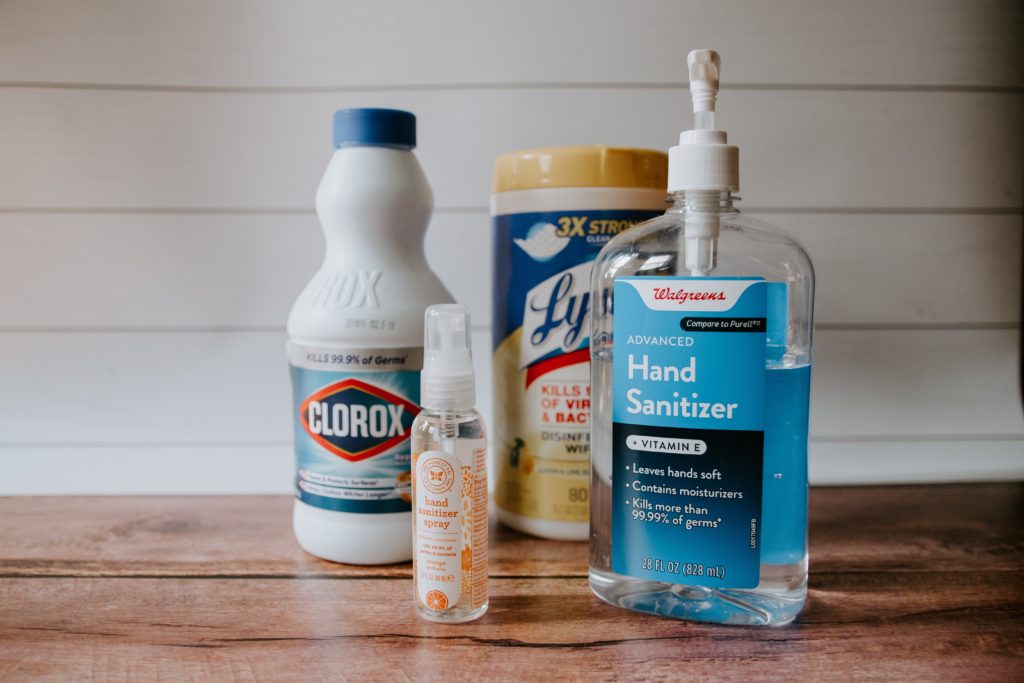So many people believe that the best way to prevent viruses in your home is by diligently cleaning it; well, no one can deny that cleaning your house is beneficial to your health in more ways than one, however, there is a major difference between cleaning and disinfecting a household. To put it simply, cleaning will remove dirt, grime, and perhaps some germs, but disinfection is the only way to kill viruses in your home.
The U.S. Environmental Protection Agency (EPA) has approved a list of disinfectants to be used for effectively killing germs that can spread the highly contagious coronavirus and other types of viruses such as whooping cough and influenza. Therefore, it is imperative that you switch to germ-fighting cleaning solutions for home cleaning tasks.
During a time like this when COVID-19 had brought the world to a standstill and the number of cases and deaths continue to rise around the globe, it is absolutely necessary to disinfect your home to ensure that this easily transmissible virus does not affect your home and family.
How to Disinfect Your Home
Before you can attempt to disinfect your home, it is important to clean it. Just like a regular cleaning routine that involves vacuuming/sweeping and mopping the floor, dusting the furniture, and washing the bathroom(s), these cleaning tasks must be done on a daily basis before disinfecting your house. Cleaning will help to avoid cross-contamination while also removing some germs from household surfaces.
After you have cleaned the house, focus on disinfecting those common areas in your home that are prone to bacteria buildup, otherwise known as ‘high-touch surfaces’. Basically, these are objects and surfaces that are frequently touched in a house that may potentially be contaminated with a virus.
Common High-Touch Surfaces and Objects
- Doorknobs/handles
- Switchboards/switches
- Furniture (tables, cabinets, chairs, shelves, etc)
- Armrests
- Toilet seat, lid, and flush pull/button
- Faucets
- Kitchen appliances
- Countertops
- Remotes
- Gaming consoles
- Gadgets (mobile phones, tabs, iPads, etc)
- Computers
Along with the list above, consider other areas and items that you or other household members frequently touch and put them on your list of high-touch surfaces that require disinfection.
Disinfecting High-Touch Surfaces and Objects
Daily disinfection of these frequently touched things in your house is as simple as wiping them down with EPA-approved disinfectant wipes or a spray and a clean cloth. Although disposable wipes are not feasible, we suggest using them on germy hotspots such as the toilet seat, lid, and bowl exteriors, as well as doorknobs and handles. This is because using the same cloth on different objects after wiping these surfaces run the risk of cross-contamination.
For other areas and items, simply dampen a clean cloth with your chosen disinfectant and wipe them down thoroughly. Rinse or replace the cloth at intervals and throw them in the washer for a hot cycle after you have finished using them.
How to Disinfect Fabrics in Your House
Studies have shown that viruses including the novel coronavirus can survive on fabrics such as the clothes you wear and the bed linen you sleep on. Although the possibility of contracting the virus from fabric is relatively low, it’s better to be safe than sorry. More importantly, if a household member is sick or showing symptoms of COVID-19, disinfecting their clothes, bed sheets, and other fabrics that they have been in contact with is a must to stop the spread of the virus in your house. This, of course, is just as important as disinfecting the entire house when someone living in your home catches a dangerous virus. Similarly, if you have been out and crossed paths with people/strangers, your clothes should be removed and put in the washer as soon as you get home.
Laundering Clothes/Sheets to Disinfect Them
The good news is that laundering fabrics in a washing machine using regular detergent is all you need to do to kill potential viruses that may be clinging to the material. For someone that has tested positive for coronavirus, however, it is advisable to use the hottest cycle appropriate for the fabric in question as heat aids in effectively killing viruses.
IMPORTANT: When handling fabrics of a sick person or potentially contaminated fabrics, avoid shaking them as this will disperse the virus into the air.
How to Disinfect Upholstery
Removable upholstery such as cushion covers and curtains can be laundered/disinfected as per their cleaning requirements using regular laundry detergent and hot water (unless their labels suggest specific washing instructions). Upholstered furniture, on the other hand, needs to be manually disinfected at least twice a week during a deadly virus outbreak like COVID-19.
To do this, follow the steps below:
- Use an upholstery attachment to vacuum the surface.
- Dampen the upholstery by spraying with a disinfectant or use a clean, saturated cloth to wipe over the surface.
- Allow it to air dry, preferably overnight.
- Vacuum again the following day.
By using the guide above to disinfect your home on a daily basis, your efforts to prevent viruses in your house will not go in vain! Of course, following strict protocol during the COVID-19 pandemic is critically important to avoid contracting the virus and/or spreading it to others. Until the fight against coronavirus has been won, stay home, wash your hands frequently, practice social distancing, and use sanitizer and wear a mask when out in a public place.

